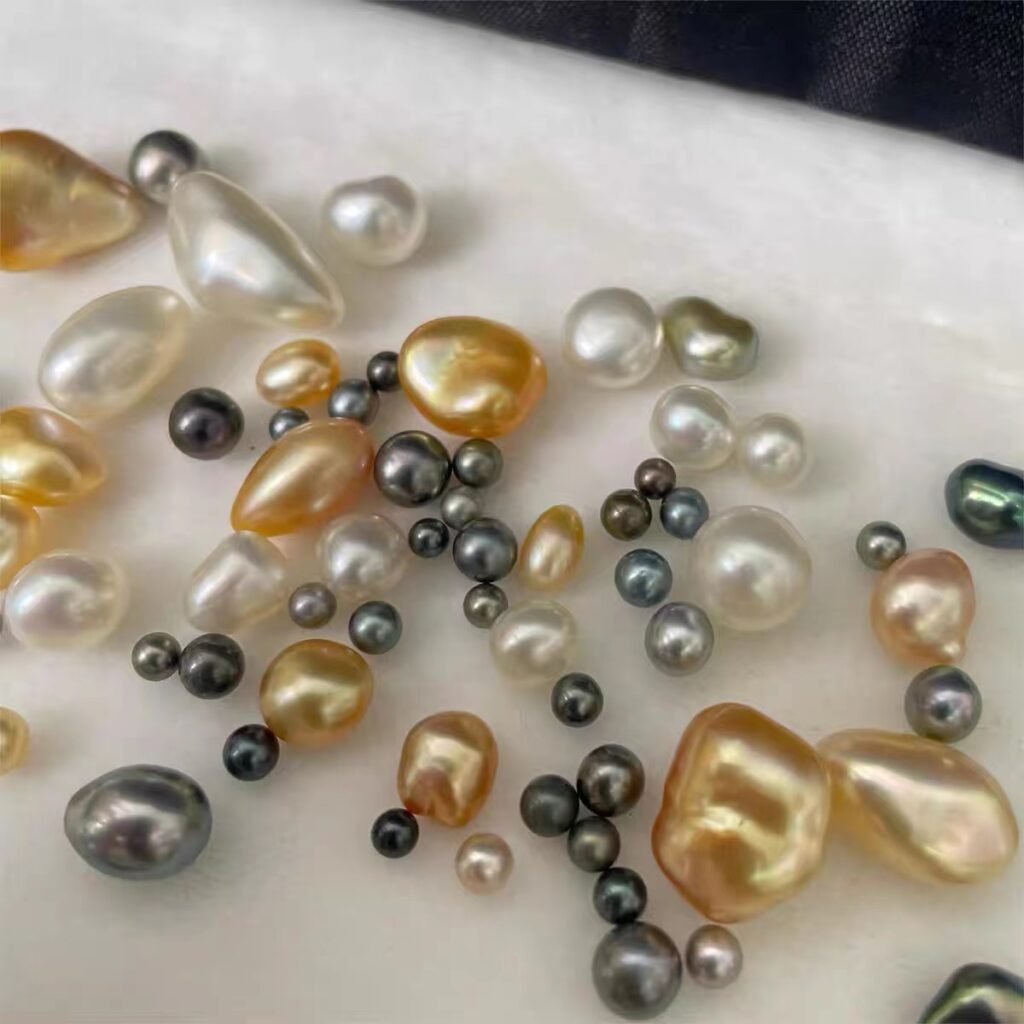
Baroque pearls are a general term for irregular pearls, which are divided into two types according to their culture environment: seawater nucle-free keshi pearls and nucleated-shaped pearls, which are our standard Baroque pearls.Each Baroque pearl and keshi pearl is unique, a gift from nature, a surprise made by accident.
What are Baroque pearls?
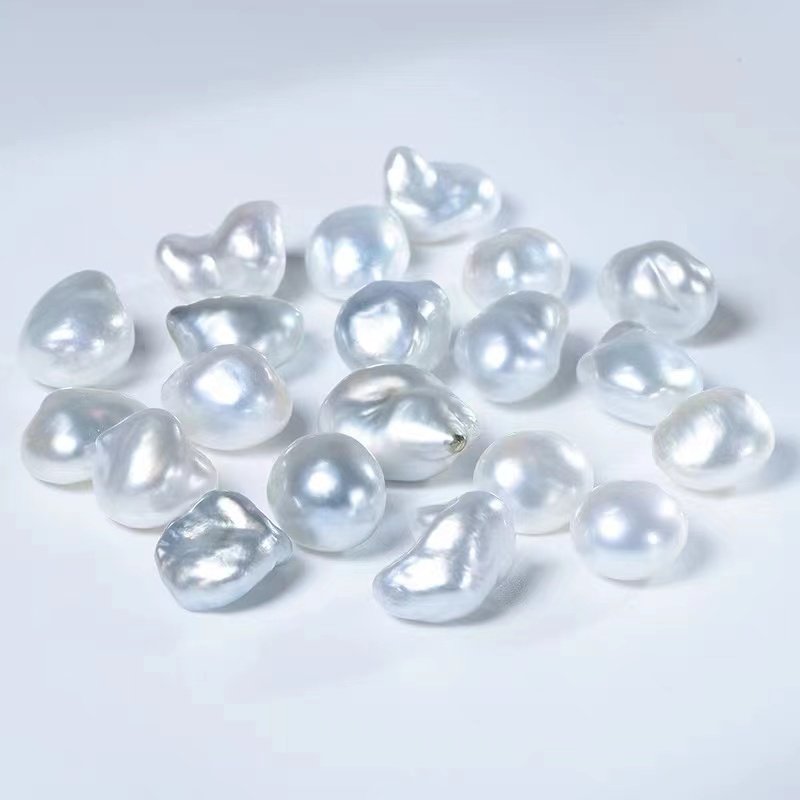
Baroque pearls are irregularly shaped pearls that vary in size, color, shape, and luster. They can be round, oval, flat, twisted, or have other shapes; some even have apparent flaws. However, these imperfections give Baroque pearls unique charm, making them a favorite of jewelry designers.
The word baroque comes from the Portuguese word baroque, meaning “not round pearl.” We generally refer to shaped pearls with cores as baroque pearls. Baroque pearls originated in Europe in the 17th century during the European Renaissance.
The unique charm of Baroque pearls was closely linked to the artistic style of the Renaissance. It thus became a popular element in jewelry design at that time. Baroque pearls are closely related to the European Renaissance. During this period, artists sought individuality, freedom, and natural expression. This concept echoed the irregular shape and unique charm of the Baroque pearl. At the same time, Baroque pearls also became the favorite jewelry of aristocrats and wealthy merchants during this period, highlighting their identity and taste.
What is Keshi Pearl?
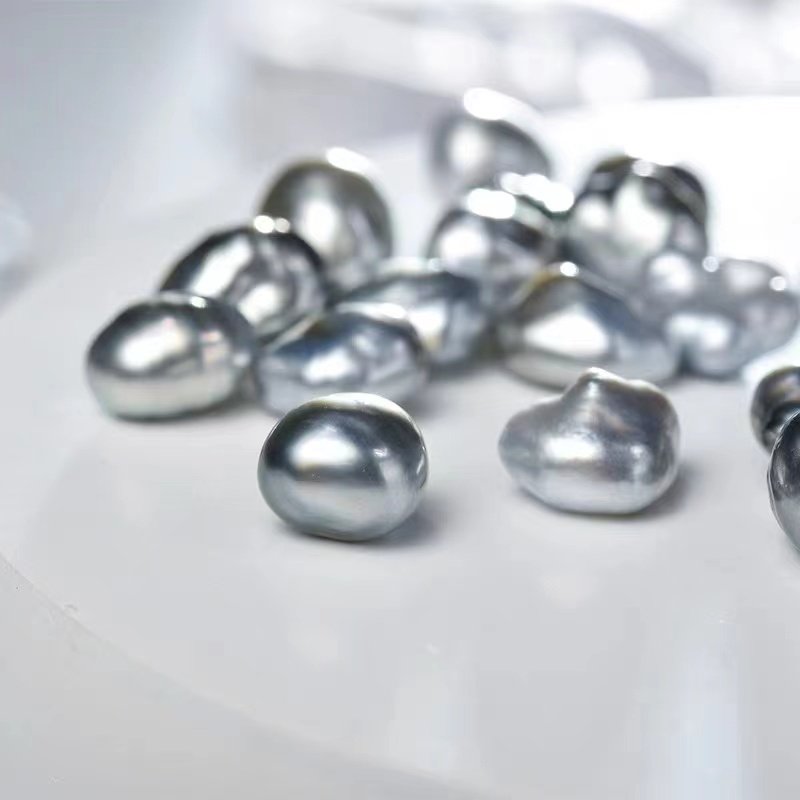
The word keshi comes from Japanese and stands for fine particles. Our typical keshi pearls refer to those irregularly shaped, nucle-free marine-cultured pearls. Although keshi pearls are core-free, they are not naturally formed; instead, core-free keshi pearls are accidentally formed by artificial intervention.
What causes keshi and Baroque pearls to form?
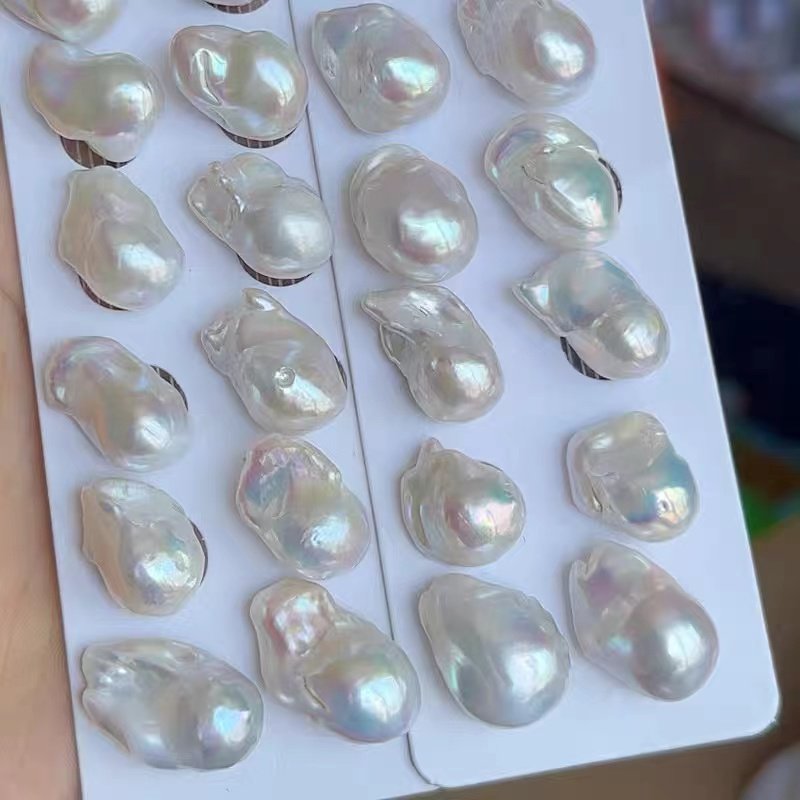
Keshi is accidentally formed in marine pearl culture because the mother shell rejects the pearl nucleus and expels it from the shell body, creating a pearl with many layers.
In the culture process, Baroque pearls were implanted into the mother shell, which continuously secreted pearls. Due to the health condition of the mother shell, water temperature, weather, and other factors, irregular pearls were formed.
Keshi pearl compared to Baroque pearl
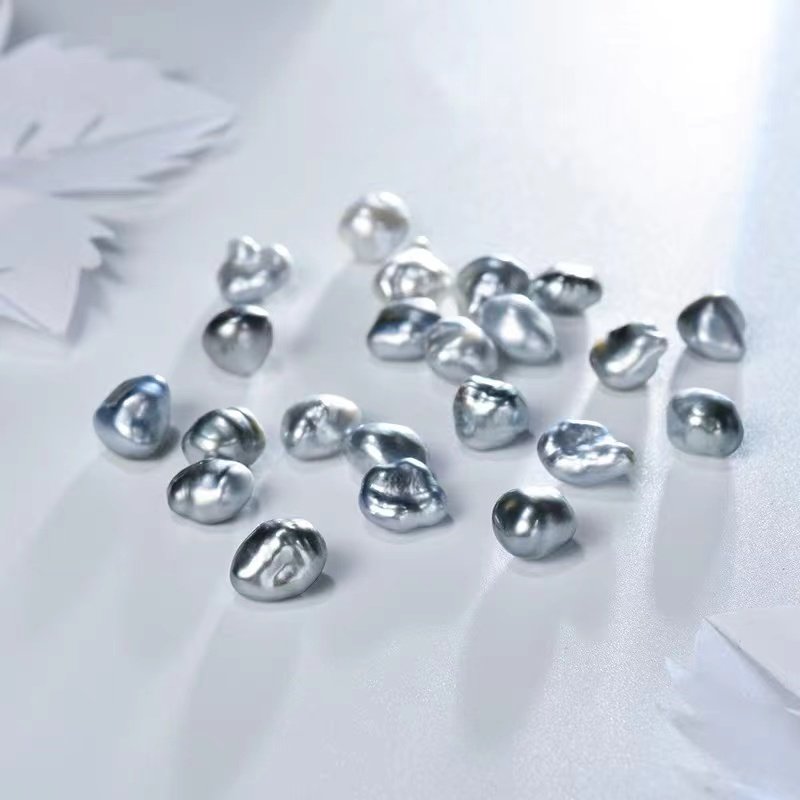
Pearl’s structure is different
Keshi pearls are not embedded in the core; the whole pearl is nacre, so they are relatively complex and resistant to wear. Keshi pearls have a long-lasting shine and can be worn for years.
Baroque pearls are formed by combining the pearl core and the pearl layer and have a core inside. They are thinner than Keshi pearls and are formed by the irregular distribution of bead layers during growth.
Different sizes and shapes
Keshi pearls do not have a core, so they are primarily tiny, usually no more than 8mm in diameter. They have a variety of shapes and a natural and spontaneous beauty. Keshi pearls are rich in color and luster and have a delicate and warm skin texture, which is very attractive.
Baroque pearls are bigger than Keshi pearls. Because they are cultured with nuclei, they are rounder overall, usually with a somewhat irregular distribution at both ends of the bead.
Different yield
Keshi pearls are accidentally grown in marine pearl culture, and the yield is uncontrollable, and the number is rare.
Most pitted pearls are not round, and it is tough for pearls to become perfectly round, so Baroque is ubiquitous, and the price is lower than Keshi pearls.
How to choose a Baroque pearl?
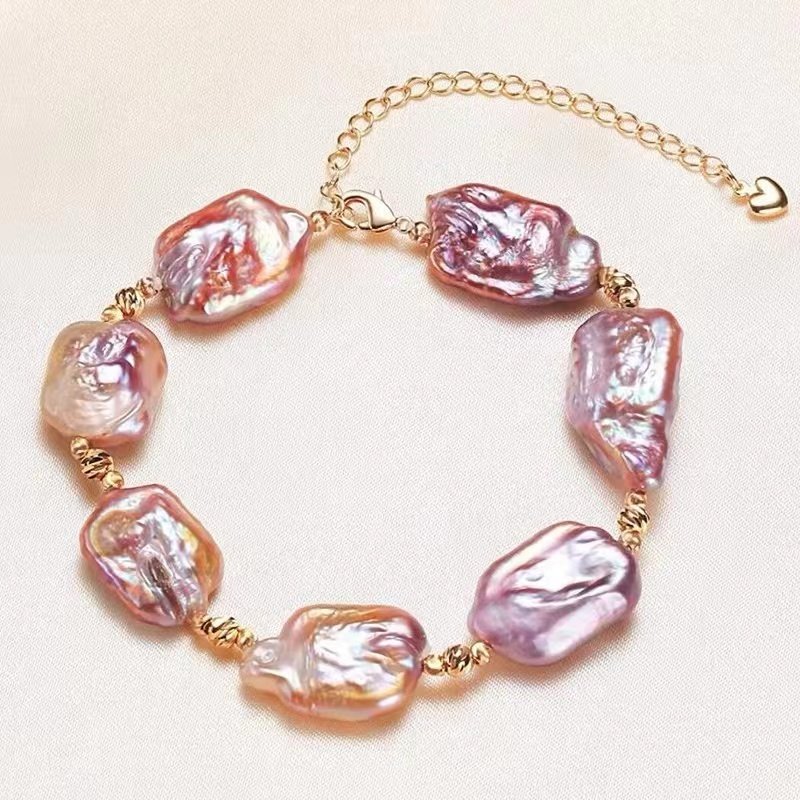
When selecting Baroque pearls, pay attention to the following aspects:
Gloss
The luster of the Baroque pearl is an essential manifestation of its value. The brighter the gloss, the better the quality of the pearl.
Color
Baroque pearls come in various colors, including white, gold, and pink. Choose the right color according to personal preference and matching needs.
Size
There is no fixed standard for the size of Baroque pearls, and the appropriate size is chosen according to personal preference and the occasion for wearing.
Blemish
The imperfections of Baroque pearls are one source of their unique charm. However, defects that are too obvious will affect the pearl’s beauty and value. When choosing, pay attention to the degree of defects.
How do you match Baroque pearls?
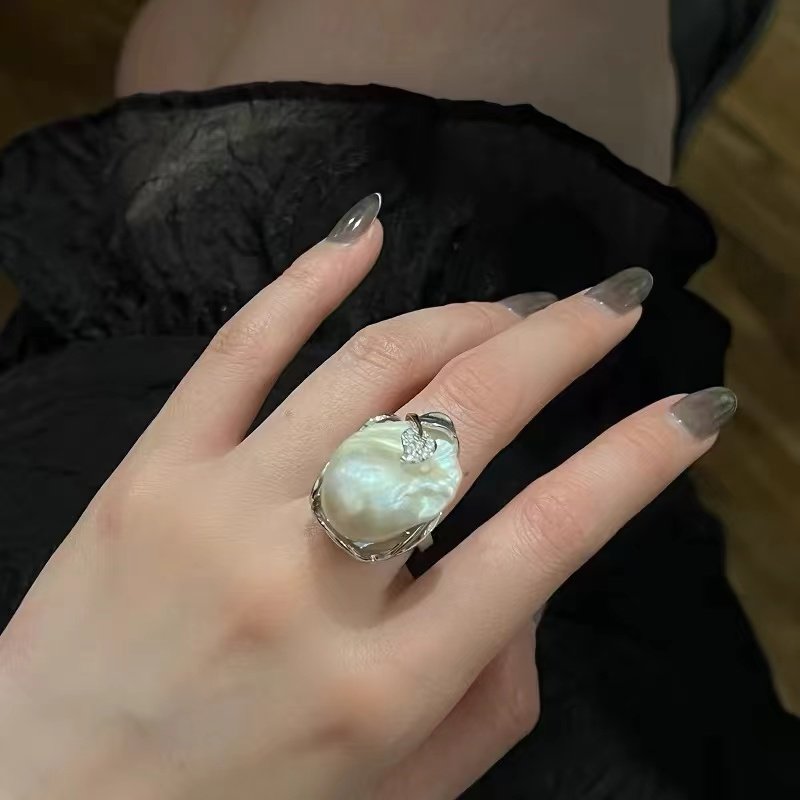
Baroque pearls are suitable for pairing with simple clothing styles, such as white, black, or pale-colored dresses and shirts. They can also be paired with a simple necklace, earrings, or bracelet to show their unique charm. Baroque pearl jewelry can be a focal point that plays a foil role.